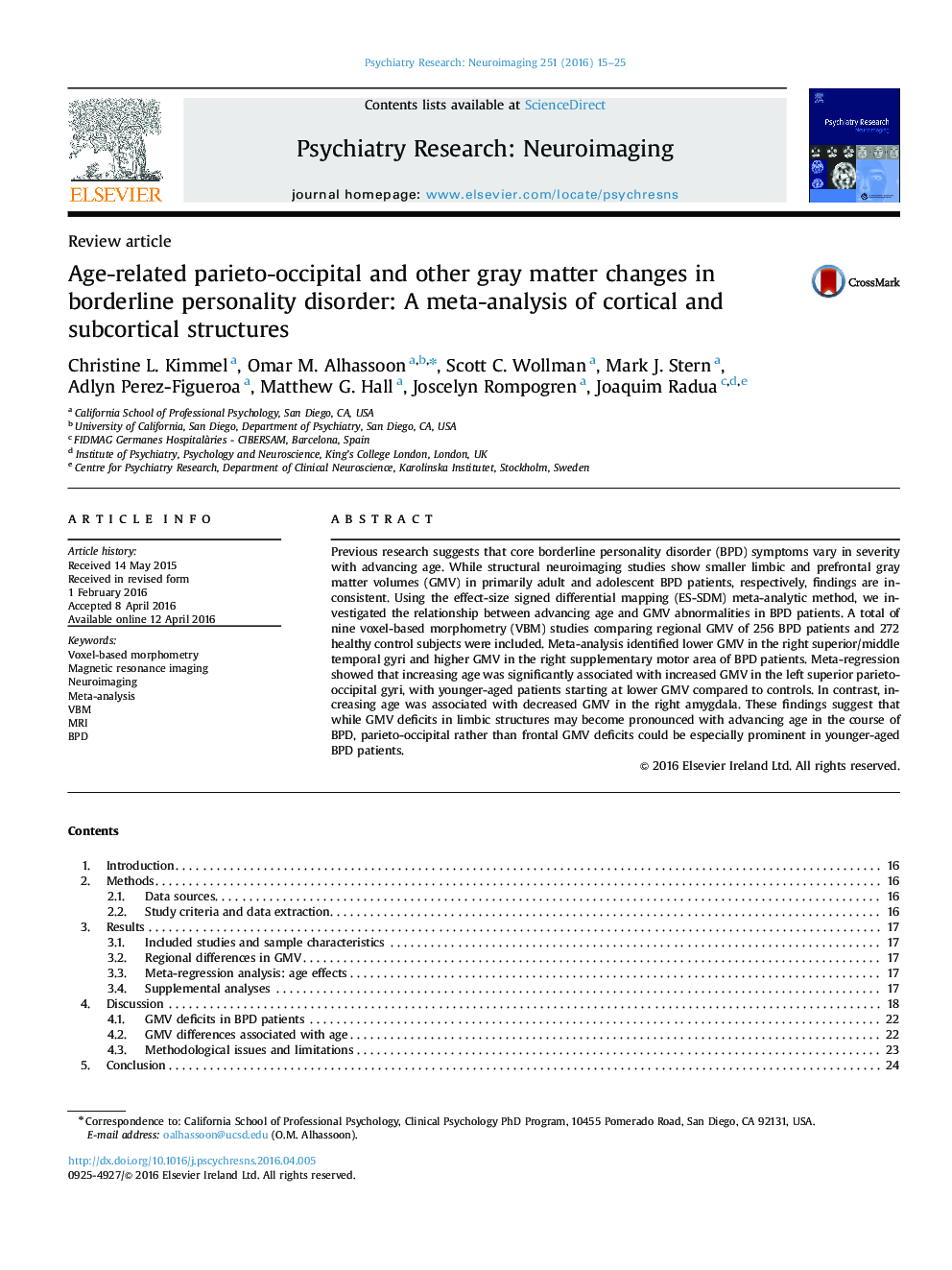| Article ID | Journal | Published Year | Pages | File Type |
|---|---|---|---|---|
| 334707 | Psychiatry Research: Neuroimaging | 2016 | 11 Pages |
•Left superior parieto-occipital volumes increase with age in borderline patients.•Younger aged borderline patients show significantly lower parieto-occipital volumes.•Right amygdala volumes decrease with age in borderline patients.•New dimension added to biosocial theory of borderline personality development.
Previous research suggests that core borderline personality disorder (BPD) symptoms vary in severity with advancing age. While structural neuroimaging studies show smaller limbic and prefrontal gray matter volumes (GMV) in primarily adult and adolescent BPD patients, respectively, findings are inconsistent. Using the effect-size signed differential mapping (ES-SDM) meta-analytic method, we investigated the relationship between advancing age and GMV abnormalities in BPD patients. A total of nine voxel-based morphometry (VBM) studies comparing regional GMV of 256 BPD patients and 272 healthy control subjects were included. Meta-analysis identified lower GMV in the right superior/middle temporal gyri and higher GMV in the right supplementary motor area of BPD patients. Meta-regression showed that increasing age was significantly associated with increased GMV in the left superior parieto-occipital gyri, with younger-aged patients starting at lower GMV compared to controls. In contrast, increasing age was associated with decreased GMV in the right amygdala. These findings suggest that while GMV deficits in limbic structures may become pronounced with advancing age in the course of BPD, parieto-occipital rather than frontal GMV deficits could be especially prominent in younger-aged BPD patients.
